| Bates Monoplane | |
|---|---|
 | |
| Role | Sport aircraft |
| National origin | United States of America |
| Manufacturer | (Carl) Bates Aeroplane Company |
| Designer | Carl Sterling Bates |
The Bates Monoplane was a pioneering aircraft built by Carl Sterling Bates in 1911.
| Bates Monoplane | |
|---|---|
 | |
| Role | Sport aircraft |
| National origin | United States of America |
| Manufacturer | (Carl) Bates Aeroplane Company |
| Designer | Carl Sterling Bates |
The Bates Monoplane was a pioneering aircraft built by Carl Sterling Bates in 1911.
Bates developed his first aircraft, a piloted kite in 1898 at the age of 14 at Clear Lake, Iowa. Later as a student of Octave Chanute, he developed his own 10 hp (7 kW) biplane in 1908 with a similar design as a Curtiss biplane. Bates raced a modified Buick at Daytona with this tricycle gear aircraft. [1] In 1911 he started on an all original design of his own, including a lightweight 30 hp (22 kW) engine.
The monoplane was built using a wooden fuselage, with a fabric covered oval steel tube tail section. Bates developed his own 30 hp (22 kW) engine for the aircraft that was also used on the Steinhous tandem biplane, and the Charles A. Hibbard monoplane of the same period. [2]
Bates tested and flew his designs at Cicero Field before the airport officially opened. His monoplane demonstrated, and crashed on the same day when the field opened on 4 July 1911. [3] The aircraft was later rebuilt with a 3-cylinder Poyer engine by Heath.
In 1912 Bates Aeroplane company was sold to Heath Aircraft Company. [4]
An example of a 1912 Bates monoplane is in the EAA Airventure Museum in Oshkosh, Wisconsin It was purchased in 1918 and stored in a barn until its restoration in 1957. [5]
Data from eaa
General characteristics

Handley Page Limited was a British aerospace manufacturer. Founded by Frederick Handley Page in 1909, it was the United Kingdom's first publicly traded aircraft manufacturing company. It went into voluntary liquidation and ceased to exist in 1970. The company, based at Radlett Aerodrome in Hertfordshire, was noted for its pioneering role in aviation history and for producing heavy bombers and large airliners.
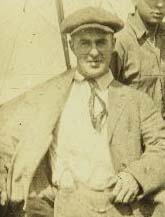
Otto William Timm was a California-based barnstormer and aircraft manufacturer of German descent. Charles Lindbergh's first flight was flown by Timm. Timm partnered at times with his brother Wally Timm who did a lot of flying for the nascent Hollywood movie industry.

Blériot Aéronautique was a French aircraft manufacturer founded by Louis Blériot. It also made a few motorcycles between 1921 and 1922 and cyclecars during the 1920s.
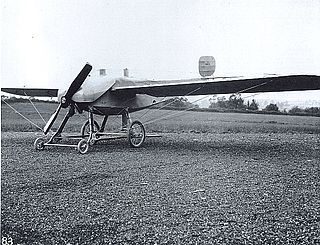
The Bristol Coanda Monoplanes were a series of monoplane trainers designed by the Romanian designer Henri Coandă for the British company British and Colonial Aeroplane Company.

The Farman III, also known as the Henry Farman 1909 biplane, was an early French aircraft designed and built by Henry Farman in 1909. Its design was widely imitated, so much so that aircraft of similar layout were generally referred to as being of the "Farman" type.
Carl S. Bates was an aviation pioneer from Clear Lake, Iowa. He piloted gliders in 1899, and in 1906 he designed a gasoline-powered airplane that was equipped with an air-cooled engine, a metal propeller and metal wing rudders.
The Advance Motor Manufacturing Company was a British motorcycle and engine manufacturer established in 1905. As well as supplying aircraft engines to the pioneering monoplane developers, Advance engines were also used by Captain Robert Scott to power Antarctic snow sleds. After the end of the Second World War the company was sold to Sheepbridge Engineering and became a motor supplies organisation.
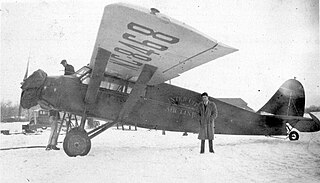
The Stinson Detroiter was a six-seat cabin airliner for passengers or freight designed and built by the Stinson Aircraft Syndicate, later the Stinson Aircraft Corporation. Two distinct designs used the Detroiter name, a biplane and a monoplane.
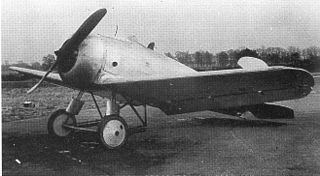
The Handley Page Type S, or HPS-1 was a prototype British carrier-based fighter developed for the United States Navy in the early 1920s. A low-wing monoplane, it was unsuccessful, only two being built and flown.

The Kreider-Reisner KR-21-A was a 1928 American two-seat monoplane. They were designed and built by the Kreider-Reisner Aircraft Company of Hagerstown, Maryland. Fairchild Aircraft took over Kreider-Reisner in 1929 and continued to build them, as the Fairchild KR-21, later the Fairchild 21.

The Cody V was a single-engined biplane built by the British-based American aviation pioneer Samuel Franklin Cody in 1912. It was built from the remains of two of Cody's earlier aircraft, and won the 1912 British Military Aeroplane Competition, with two aircraft being purchased for the Royal Flying Corps. It was abandoned after the mid air disintegration of one of the aircraft in April 1913.

The Cody IV monoplane was a single-engined monoplane designed and built by the American-born but British-based aviation pioneer Samuel Franklin Cody in 1912. It was intended for entry into the 1912 British Military Aeroplane Competition, but was wrecked in a crash before the start of the competition.
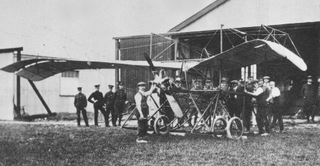
The Dunne D.7 was one of J. W. Dunne's swept wing tailless aircraft designed to have automatic stability, first flying in 1911. It was a single seat, single engined pusher monoplane developed from the unsuccessful D.6.

The Short S.27 and its derivative, the Short Improved S.27, were a series of early British aircraft built by Short Brothers. They were used by the Admiralty and Naval Wing of the Royal Flying Corps for training the Royal Navy's first pilots as well as for early naval aviation experiments. An Improved S.27 was used by C.R. Samson to make the first successful take-off from a moving ship on 9 May 1912.

The Vickers R.E.P. Type Monoplanes were a series of single-engined monoplane aircraft built by Vickers prior to the outbreak of the First World War. They were developed from a French design for which Vickers had purchased a license, with eight being built.

The Short S.36 was a British two-seat tractor biplane, built by Short Brothers for Francis McClean in 1911. It was later developed into the Short S.41 and Short S.45, which were the first of a long series of similar aircraft built for the RNAS and RFC.

The pioneer era of aviation refers to the period of aviation history between the first successful powered flight, generally accepted to have been made by the Wright Brothers on 17 December 1903, and the outbreak of the First World War in August 1914.
Marcel Jurca, was a prolific designer of homebuilt aircraft in France. He is most well known for his Tempête and Sirocco designs.
|title= (help)